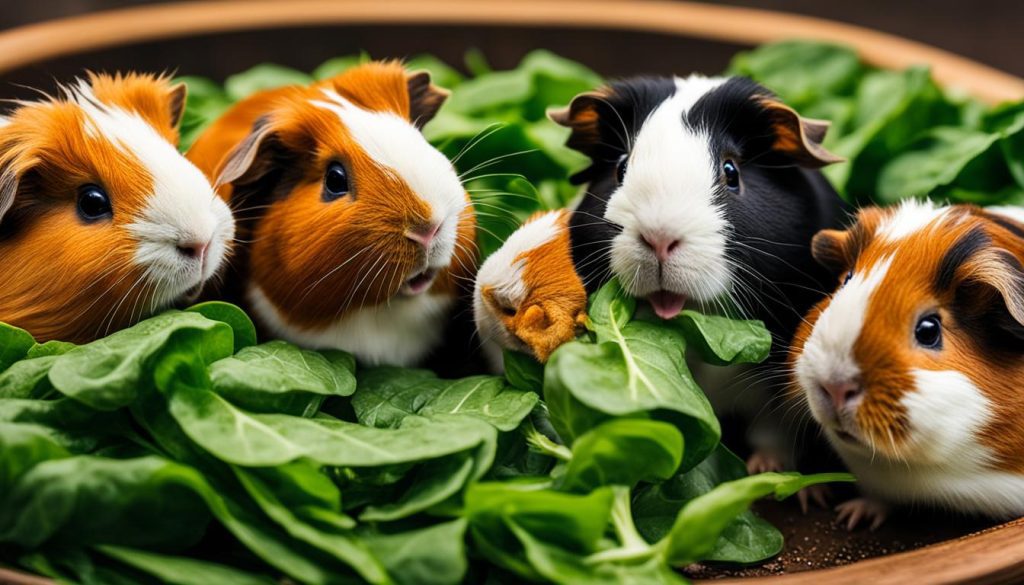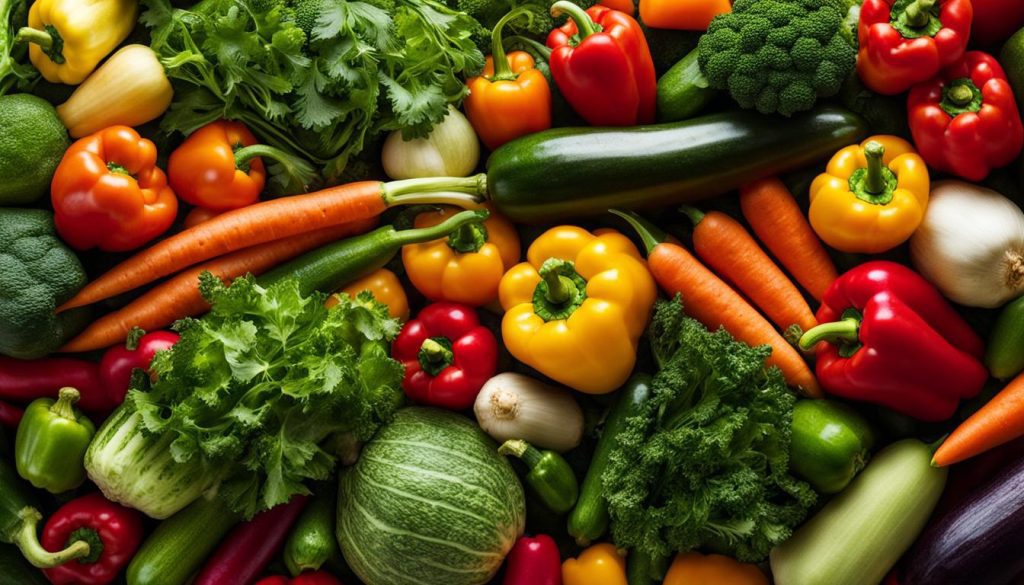Hi there! Today, I want to talk about a popular topic among guinea pig owners: can guinea pigs eat spinach leaves? As responsible pet owners, we always want to provide our furry friends with the best possible nutrition. So, let’s dive into the world of guinea pig diets and find out if spinach leaves are a safe option.
Spinach leaves can indeed be a part of a guinea pig’s diet, but it’s important to offer them in moderation. Spinach is packed with essential nutrients, including vitamin A, which promotes healthy eyesight, and vitamin C, which supports their immune system.
However, spinach leaves are also high in calcium and oxalates, which can pose some risks if consumed in excess. Too much calcium can lead to bladder stones, while oxalates can further increase the risk. Therefore, it’s crucial to balance spinach with other safe vegetables to maintain your guinea pig’s overall health.
When including spinach in their diet, aim for around 40 grams per day, including the stems. Remember, variety is key! Your guinea pig needs a well-rounded diet consisting of other leafy greens and vegetables to ensure they receive all the necessary nutrients.
Now that you know the basics, let’s explore the nutritional benefits of spinach for guinea pigs in more detail. Keep reading to discover why this leafy green can be a valuable addition to your pet’s menu!
Can Guinea Pigs Eat Spinach Leaves? Yes, but not too often.
- Guinea pigs can eat spinach leaves, but it should be fed in moderation.
- Spinach is rich in vitamin A for eyesight and vitamin C for their immune system.
- However, spinach is high in calcium and oxalates, which can lead to bladder stones if consumed excessively.
- Incorporate other safe vegetables into your guinea pig’s diet to maintain a nutritional balance.
- Aim for around 40 grams of spinach per day, including the stems, as part of a diverse menu.
Nutritional Benefits of Spinach for Guinea Pigs
When it comes to guinea pig food, spinach is a nutritious leafy green that can provide important health benefits to your furry friend. Spinach is rich in essential vitamins and minerals that support their overall well-being.

One of the key advantages of feeding spinach to guinea pigs is its high vitamin content. Spinach is packed with vitamin A, which plays a crucial role in maintaining their eyesight. Additionally, it contains vitamin C, which helps boost their immune system and supports their overall health.
Spinach also provides calcium, an essential mineral for maintaining strong and healthy bones. However, it’s important to note that while calcium is necessary, consuming too much can lead to bladder stones in guinea pigs. Therefore, it’s crucial to feed spinach in moderation and alongside a well-rounded diet that includes other vegetables.
By incorporating spinach into your guinea pig’s diet, you can ensure they receive important vitamins and minerals that contribute to their overall health and well-being. However, remember to avoid overfeeding and maintain a balanced nutritional plan to prevent any potential health issues.
The Downsides of Feeding Spinach to Guinea Pigs
While spinach has nutritional benefits for guinea pigs, it is important to be aware of the downsides. Spinach is high in oxalates, which can increase the risk of bladder stones in guinea pigs. It is essential to feed spinach in controlled amounts and alongside a variety of other vegetables to maintain a balanced diet.
Avoid feeding frozen or cooked spinach to guinea pigs, as they should be provided with raw and fresh foods for optimal health.
Prioritize Leafy Greens in Guinea Pig’s Diet
When considering the guinea pig diet, remember to prioritize leafy greens, including spinach. However, make sure to offer a diverse range of suitable leafy greens to ensure a well-rounded nutritional plan for your furry friend. Variety is key to meeting guinea pigs’ nutritional needs and providing them with a balanced diet.
“Feeding spinach in moderation and alongside other leafy greens is crucial for maintaining a healthy guinea pig diet.”
By including other leafy greens such as romaine lettuce, red and green leaf lettuces, mustard or turnip greens, cabbage, kale, cilantro, and parsley, you can offer a wider range of vitamins and minerals to support your guinea pig’s well-being. Remember to introduce new vegetables gradually to prevent any digestive issues.
Ensuring a varied and properly balanced diet will help keep your guinea pig healthy, active, and happy.
Other Safe Vegetables for Guinea Pigs
When it comes to providing a well-rounded diet for your guinea pig, incorporating a variety of safe vegetables is essential. Alongside spinach, there are several other nutritious options to consider.
Leafy greens such as romaine lettuce, red and green leaf lettuces, mustard or turnip greens, cabbage, kale, cilantro, and parsley are all suitable choices. These vegetables not only offer a diverse range of flavors, but they also provide important vitamins and minerals to support your guinea pig’s overall health.

“Including a variety of fresh vegetables in your guinea pig’s diet ensures they receive a diverse range of nutrients.”
In addition to leafy greens, you can also include other vegetables in moderation. Red or green peppers, broccoli, carrots, zucchini, tomato, and sweet potato are all safe options that can add variety to your guinea pig’s plate. Just remember to introduce new fruits and veggies gradually to avoid any potential digestive issues.
By offering a mix of safe vegetables, you can create a flavorful and nutritious diet that meets your guinea pig’s dietary needs. Experiment with different combinations and observe your furry friend to determine their preferences. Always consult with a veterinarian to ensure you are providing the best possible care for your guinea pig.
Conclusion
Guinea pigs can safely enjoy spinach leaves as part of their diet, but it is important to feed them in moderation. Spinach provides valuable nutritional benefits, such as vitamins A and C, which support their overall health. However, due to its high calcium and oxalate content, overfeeding spinach can increase the risk of bladder stones in guinea pigs.
To ensure a well-rounded guinea pig diet, it is essential to include a variety of other safe vegetables alongside spinach. Leafy greens like romaine lettuce, kale, and cilantro are excellent choices. Additionally, incorporating vegetables such as red or green peppers, carrots, and broccoli can provide additional nutrients.
It is always recommended to consult with a veterinarian for specific dietary recommendations tailored to your guinea pig’s individual needs. They can guide you on the appropriate amounts of spinach and other vegetables to include in their diet. By following a balanced and nutritionally diverse plan, you can help ensure that your guinea pig remains healthy, happy, and thriving.
FAQ
Can guinea pigs eat spinach leaves?
Yes, guinea pigs can eat spinach leaves in moderation.
What are the nutritional benefits of spinach for guinea pigs?
Spinach is rich in vitamin A, which supports their eyesight, and vitamin C, which helps boost their immune system.
Are there any downsides to feeding spinach to guinea pigs?
Yes, spinach is high in oxalates, which can increase the risk of bladder stones in guinea pigs. It is important to feed spinach in controlled amounts and alongside other vegetables.
What other safe vegetables can be included in a guinea pig’s diet?
Other safe vegetables for guinea pigs include romaine lettuce, red and green leaf lettuces, mustard or turnip greens, cabbage, kale, cilantro, parsley, red or green peppers, broccoli, carrots, zucchini, tomato, and sweet potato.
How much spinach should I feed my guinea pig?
Aim to feed your guinea pig around 40 grams of spinach per day, including the stems, as part of a well-rounded diet.





